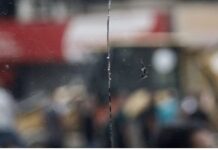Maureen Clare Murphy
The Electronic Intifada / July 31, 2024
Hamas announced early Wednesday that Ismail Haniyeh, the head of the Palestinian faction’s political wing, was assassinated in Tehran, where he was present for the inauguration of the new Iranian president.
The assassination, in Iran no less, marks a major escalation that will likely have regional ramifications and came hours after Israel bombed Lebanon on Tuesday evening, killing three civilians, according to Lebanese state media. Israel claimed that it killed a senior Hezbollah figure in the strike, but the Lebanese resistance group had not issued a statement on the matter at the time of publication.
Israel killed multiple members representing multiple generations of Haniyeh’s family in Gaza since October. Several leaders of Hamas have been assassinated by Israel before Haniyeh, only to be replaced and for the organization’s capabilities to grow.
In January, Saleh al-Arouri, the deputy head of Hamas’ politburo, was killed in a strike in Beirut along with several other cadres and commanders with the group.
Two weeks ago, Israel claimed to have killed Muhammad Deif, the secretive head of Hamas’ armed wing, in a strike in Gaza that killed at least 90 Palestinians in an area it had unilaterally declared as a humanitarian zone.
Israel continued to wage attacks across Gaza by air, land and sea amid heavy fighting and ground incursions on Tuesday.
The Palestinian health ministry in Gaza said on Tuesday that 37 people had been killed in Israeli attacks over the past 24 hours, bringing the death toll to 39,400 since early October.
The actual number of fatalities is likely much higher, with thousands of people missing under the rubble or their bodies not yet recovered from Gaza’s streets.
The Israeli military withdrew from eastern Khan Younis, the largest city in southern Gaza, on Tuesday following an incursion lasting eight days and forcing another wave of mass displacement from the area.
Palestinians returned to Khan Younis to find evidence of what the government media office in Gaza described as “horrific massacres” for which it demanded international accountability.
“Palestinian rescue workers and civilians collected dead bodies from the streets of the abandoned battle zone, bringing corpses wrapped in rugs to morgues in cars and donkey carts,” Reuters reported.
The government media office said that the bodies of 255 people had been recovered and more than 30 others were missing.
During the incursion, the Israeli military fired on 31 homes with their residents inside, as well as more than 300 other homes and residential buildings.
The military also razed the cemetery in Bani Suheila and its surroundings on the eastern outskirts of Khan Younis:
Nearly all of Gaza under evacuation orders
Israel meanwhile issued new forced displacement orders in Al-Bureij, central Gaza, “launching strikes there in apparent preparation for a new raid,” according to Reuters.
“Medics said an Israeli air strike in nearby al-Nuseirat killed 10 Palestinians as they fled from Bureij on Tuesday, and another strike killed four other Palestinians inside Bureij,” the news agency added.
More than 85 percent of the territory of Gaza is under an Israeli so-called evacuation order, the UN agency for Palestine refugees (UNRWA) said on Monday.
But there is no safe place for people to go, and no assurance of protection for civilians who choose to stay or are unable to evacuate from designated areas.
Repeated displacement is also making it increasingly difficult for organizations, already contending with Israel’s near-total blockade, to provide aid and services to those who were forced to leave their homes with next to nothing.
The Palestinian health ministry in Gaza said that it was no longer able to restore the functionality of the Gaza European Hospital in Khan Younis after an Israeli evacuation order was issued on 27 July.
The Palestinian Civil Defense warned that overcrowding among displaced people in Gaza, who have insufficient access to water and sanitation, was leading to the proliferation of diseases, including conditions affecting children’s skin.
By early July, the World Health Organization (WHO) had recorded nearly a million cases of acute respiratory infection, while other illnesses such as diarrhea, acute jaundice and cases of suspected mumps and meningitis, as well as scabies and lice, skin rashes and chicken pox are spreading among the population.
The UN health agency said on Tuesday that it was very likely that polio has infected Palestinians in Gaza after the health ministry in the territory declared a polio epidemic across the coastal enclave on Monday.
Detection of the virus in sewage samples collected in Gaza represents “a setback” against efforts to completely eradicate the disease worldwide, Christian Lindmeier, a World Health Organization official, said on Tuesday.
Al-Mezan, a Palestinian human rights group based in Gaza, warned that more than one million children in the territory “are at risk of dying if not vaccinated” for the highly infectious virus.
“To prevent thousands of deaths, the international community must ensure Israel immediately ends its genocide, including the weaponization of water and sanitation facilities,” the rights group added.
According to WHO, the disease mainly affects children under the age of 5 and one in 200 infections “leads to irreversible paralysis.” Five to 10 percent of those paralyzed die “when their breathing muscles become immobilized.”
Collapse of essential systems
With the collapse of Gaza’s solid waste management system, conditions are ripe for the disastrous spread of diseases transmitted through contamination such as polio and hepatitis A – there have been 40,000 diagnosed cases of the latter since October.
Israel’s military campaign in Gaza has seen a drop in polio vaccination rates in Gaza from 99 percent to 89 percent, according to a UNICEF spokesperson. The director of the World Health Organization announced that it was sending more than a million polio vaccines to Gaza to be administered to children “in the coming weeks,” UN News reported.
The virus, “transmitted by person-to-person spread mainly through the fecal-oral route,” according to WHO, is less frequently transmitted through contaminated water or food.
The “can emerge in areas where poor vaccination coverage allows the weakened form of the orally taken vaccine virus strain to mutate into a stronger version,” UN News added.
The vaccine-derived poliovirus type 2 “had been identified at six locations in sewage samples collected last month from Khan Younis and Deir al-Balah – two Gaza cities left in ruins by nearly 10 months of intense Israeli bombardment.”
The spread of disease and epidemics is a predictable result of Israel’s genocidal military campaign, if not the intention.
In yet another case of Israeli soldiers destroying civilian infrastructure for no military purpose, soldiers recently recorded themselves detonating Canada well, the main water facility in Rafah, southern Gaza.
The Tel Aviv daily Haaretz reported on Monday that the facility “was destroyed last week with the approval of the commander of the soldiers … but without the approval of senior officers.”
But blaming lower-ranking soldiers may be an attempt to deter international courts scrutiny of more senior military personnel, while the pattern of behavior on the ground indicates that troops are ordered to destroy essential civilian infrastructure for no military purpose – a war crime.
Younis Tirawi, writing for Dropsite News, recounted that Giora Eiland, an adviser to Israel’s defense minister Yoav Gallant, described in October a strategy to destroy the ability of Palestinians in Gaza to pump and purify water within Gaza.
Monther Shoblak, the head of the water utility in Gaza, told Tirawi that the Canada well facility had remained functional until Israel’s ground invasion of Rafah in early May, as solar panels allowed it to operate despite Israel cutting off the supply of electricity to the territory in October.
Israel destroyed 30 water wells in the south this month alone, and displaced people have been forced to shelter in overcrowded conditions without suitable hygiene infrastructure or access to sufficient clean water, fuel, food and medicine.
The international charity Oxfam said earlier this month that “Israel damaged or destroyed five water and sanitation sites every three days since the start of this war,” reducing the amount of water available in Gaza by 94 percent to a mere 4.74 liters per person – “less than a single toilet flush.”
Israel attacks Beirut
Israel bombed southern Beirut on Tuesday, with its military claiming that it targeted Fuad Shukr, a senior Hezbollah commander. Israel said that Shukr was killed but Arabic-language media said his fate remained unknown late Tuesday.
The area around Hezbollah’s Shura Council in the Haret Hreik neighborhood of the Lebanese capital was also hit, that country’s state news agency reported.
Lebanon’s health ministry said that a woman and two children were killed, though “the search for more missing persons under the rubble continues.”
The Beirut strike took down a whole residential building, and the scale of destruction may have been intended to reinforce the threats made by Israeli leaders to inflict the same genocidal violence in Lebanon that it has in Gaza.
The strike in Beirut on Tuesday was an anticipated “retaliation” from Tel Aviv after a projectile killed 12 children at a sports field in Majdal Shams, a city in the Israeli-occupied Syrian Golan Heights on Saturday. Israel blamed Hezbollah but the Lebanese resistance group denied having any connection to the deadly blast.
Yoav Gallant, Israel’s defense minister, accused Hezbollah of crossing a red line, though it is highly unlikely that the Lebanese resistance group would have deliberately targeted Majdal Shams.
Amal Saad, an expert on Hezbollah, said that since 8 October, the group “has refrained from targeting Israeli civilians, much less Syrian Druze.”
“The strong support for the resistance movement among this community, which lives under Israeli occupation, makes it illogical for Hezbollah to risk striking in this vicinity,” she added.
Targeting civilians, whether Syrian or Israeli, “wouldn’t be strategically beneficial for Hezbollah when it would inevitably lead to all-out war – a war which Hezbollah has been very keen to avoid as demonstrated by its sub-threshold responses to Israeli strikes on Beirut and on civilians” in Lebanon, according to Saad.
She added the group has been careful to “avoid giving Israel any pretext for waging war” but “it’s entirely expected” that Israel would exploit the tragedy “in order to deflect attention away from its daily massacres of Palestinian children” in Gaza.
Not ‘a single drop of blood’
Majdal Shams residents chanted “murderer, murderer” at Israeli Prime Minister Benjamin Netanyahu when he attempted to visit the site of the deadly strike on Monday.
Syrians reeling from the unprecedented mass casualty event in Majdal Shams issued a statement rejecting “that a single drop of blood be shed under the name of revenge for our children.”
After the deaths in Majdal Shams, Israeli media reported that Netanyahu canceled the exit of around 150 children from Gaza for medical treatment in the United Arab Emirates “for fear of public backlash,” the human rights group Gisha said.
In response to a petition from human rights groups, Israel’s high court on Sunday ordered the government “to inform it of its progress toward implementing a permanent mechanism for the medical evacuation of sick and injured Gazans,” The Times of Israel reported.
Tedros Adhanom Ghebreyesus, the head of the World Health Organization, announced that “85 sick and severely injured people,” including 35 children, were evacuated from Gaza to Abu Dhabi for specialized care on Tuesday.
“It is the largest medical evacuation since October 2023,” he said, adding that “63 family members and caregivers accompanied the patients.”
The Palestinian Center for Human Rights said on Sunday that the ongoing closure of Gaza’s crossings, preventing “the travel of urgent and lifesaving cases,” makes clear “Israel’s commission of genocide against the people of the Gaza Strip.”
“Those who have not been killed by Israel’s war machine are not spared by the complete Israeli siege and closure on Gaza,” the rights group added, “leaving thousands of wounded and sick doomed to certain death.”
Death is all but guaranteed due to Israel’s “deliberate destruction and collapse of the healthcare system and the weakening of its remaining lifesaving resources,” according to PCHR.
Around 14,000 sick and injured patients, most of them children and older people, require care that is not available in Gaza.
PCHR estimates that hundreds of ill people have already died due to lack of access to medical treatment but there are “no statistics available in this regard due to disruptions in official medical monitoring and documentation systems.”
Maureen Clare Murphy is senior editor of The Electronic Intifada












